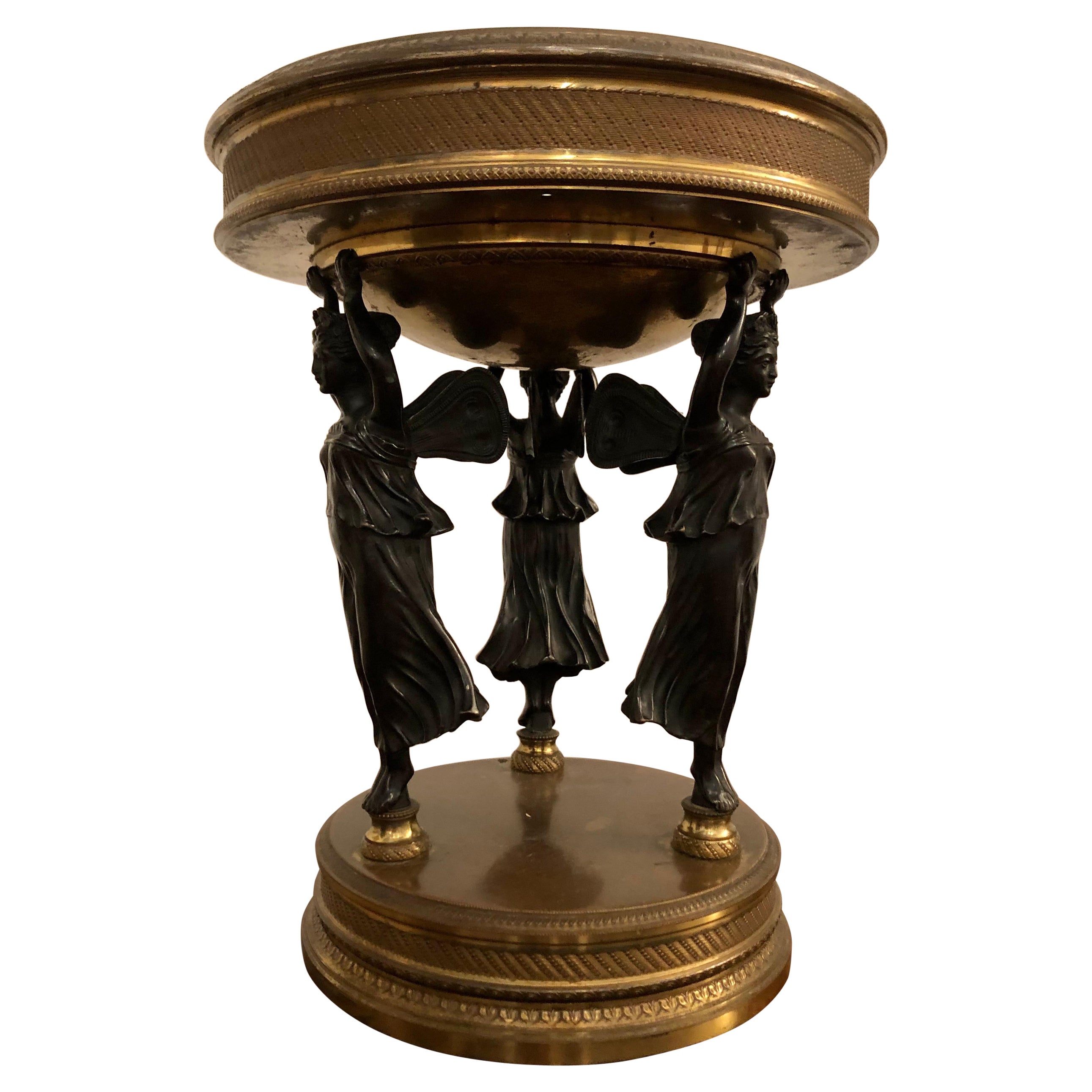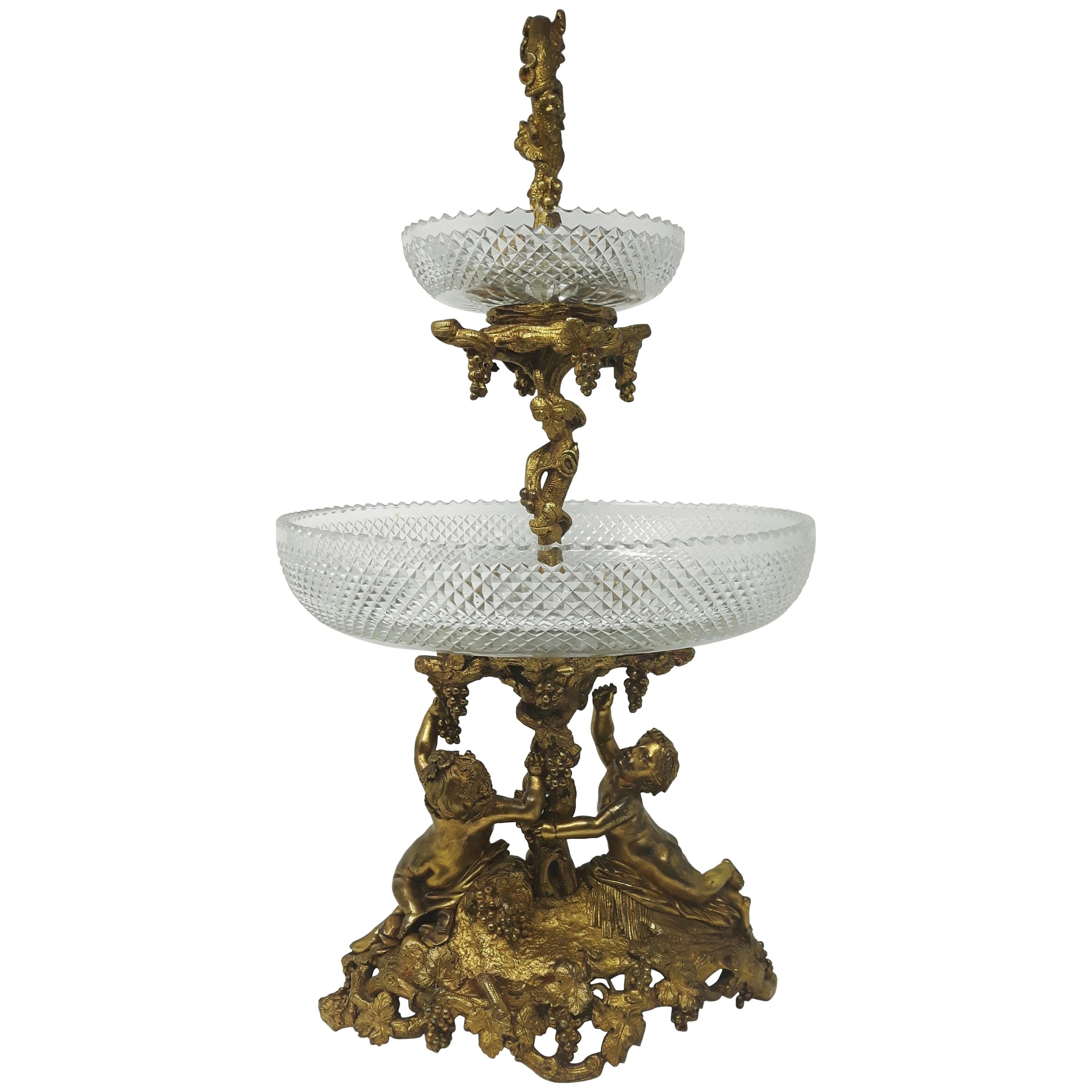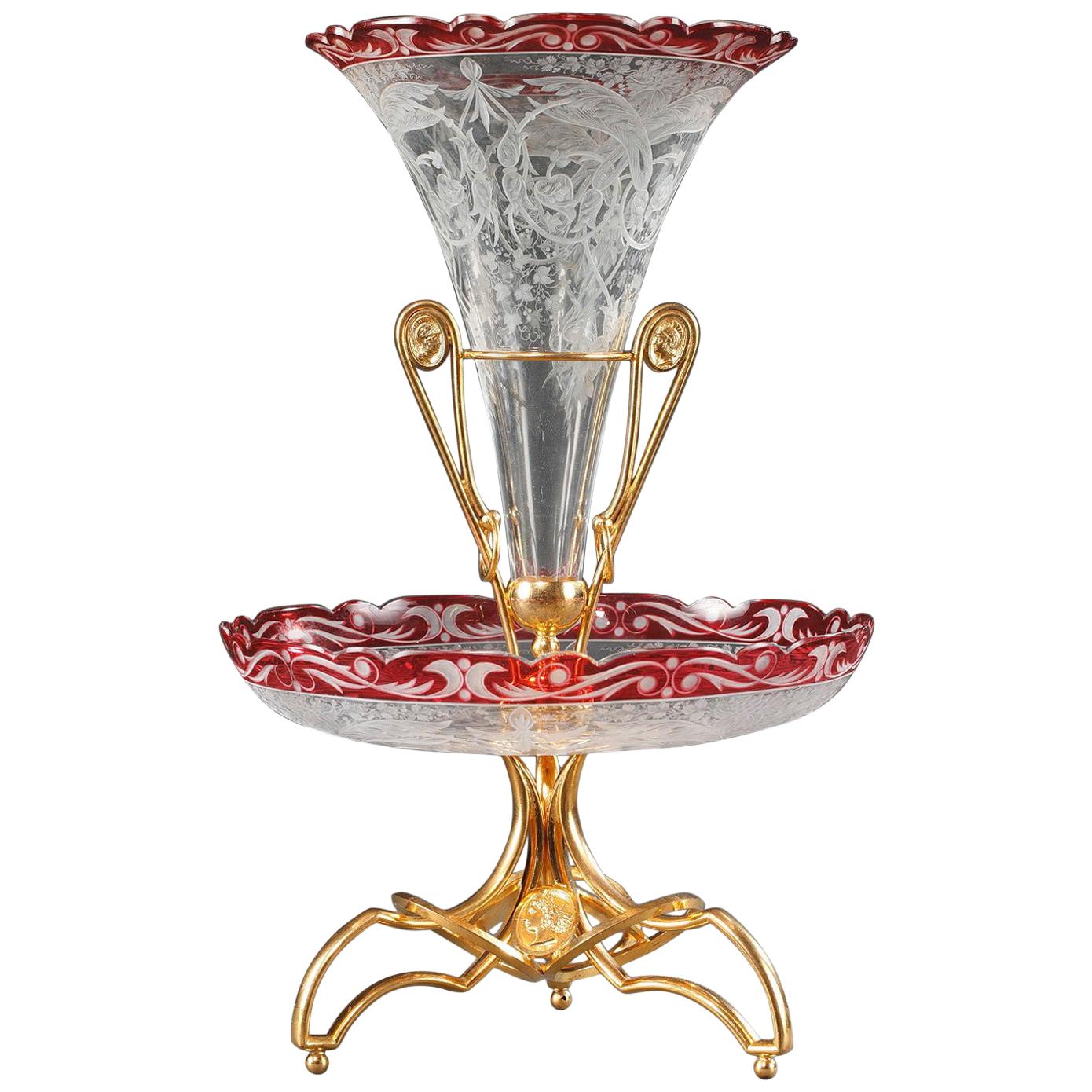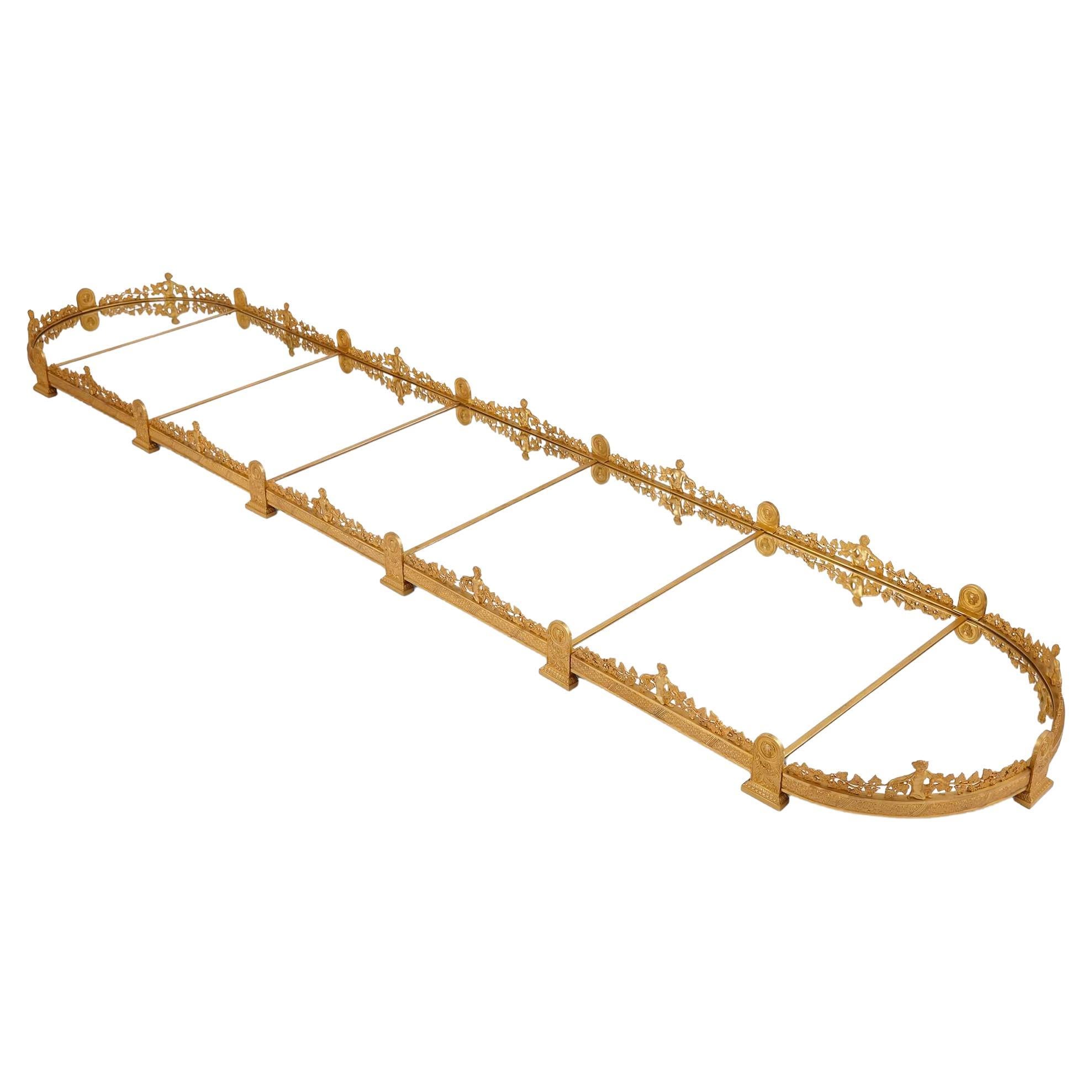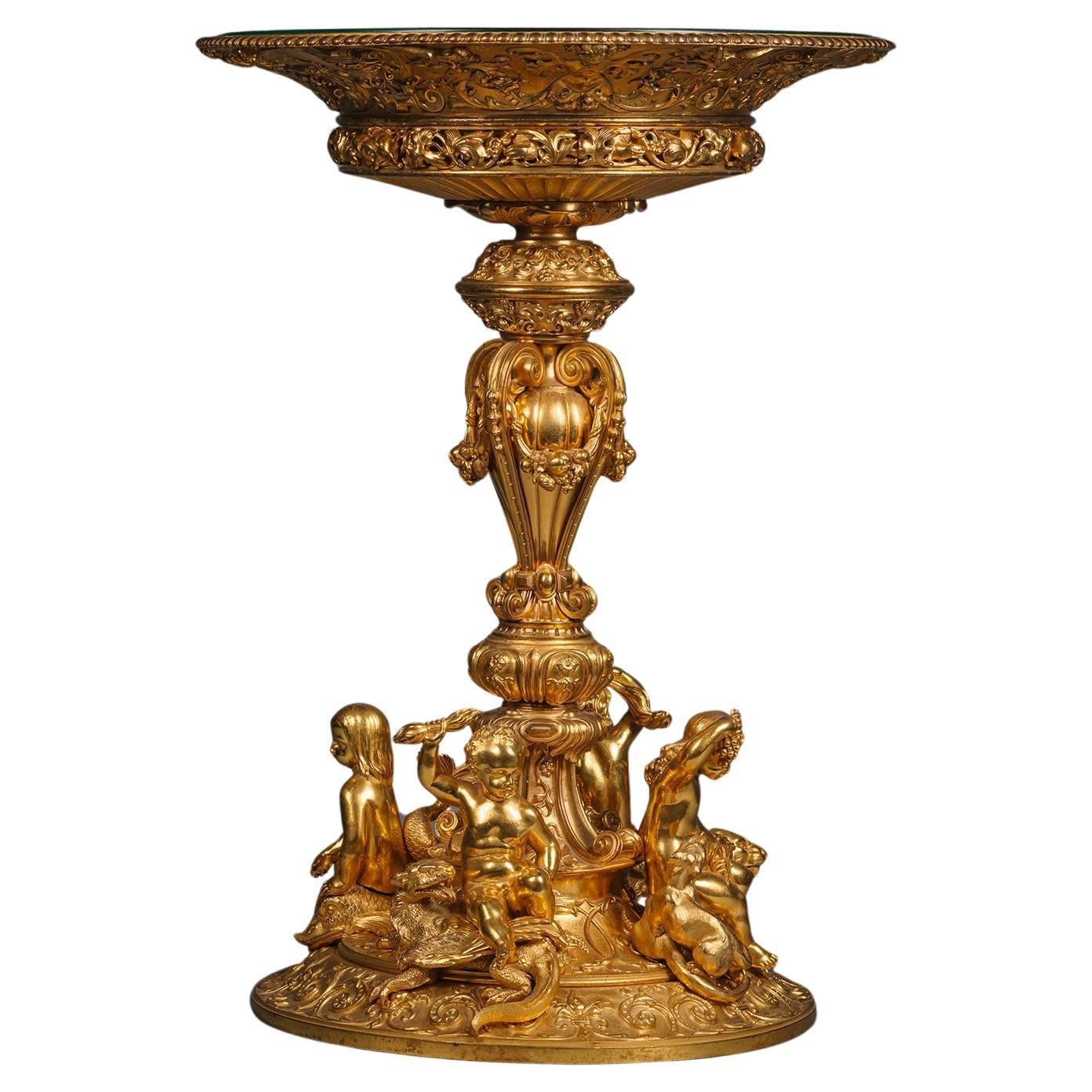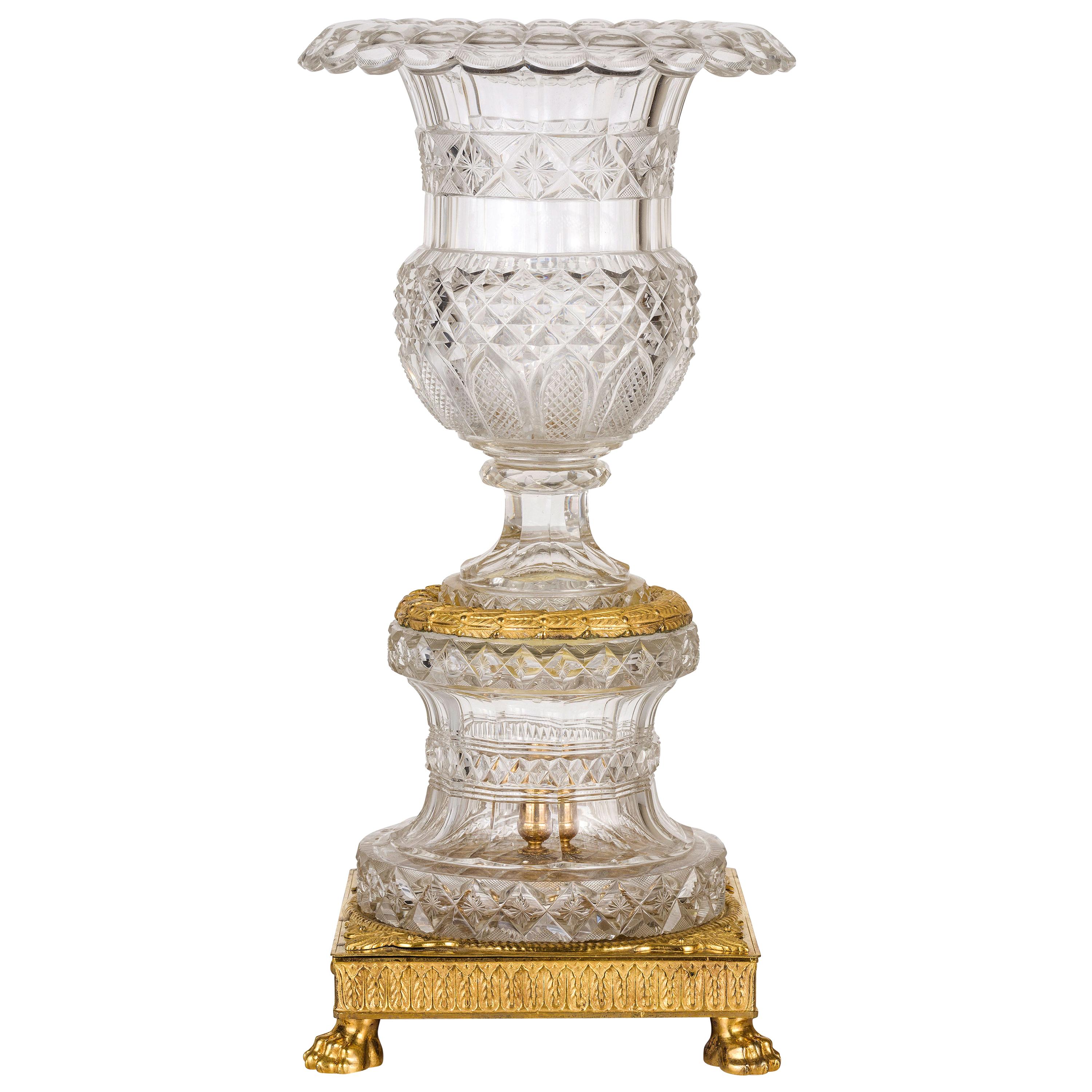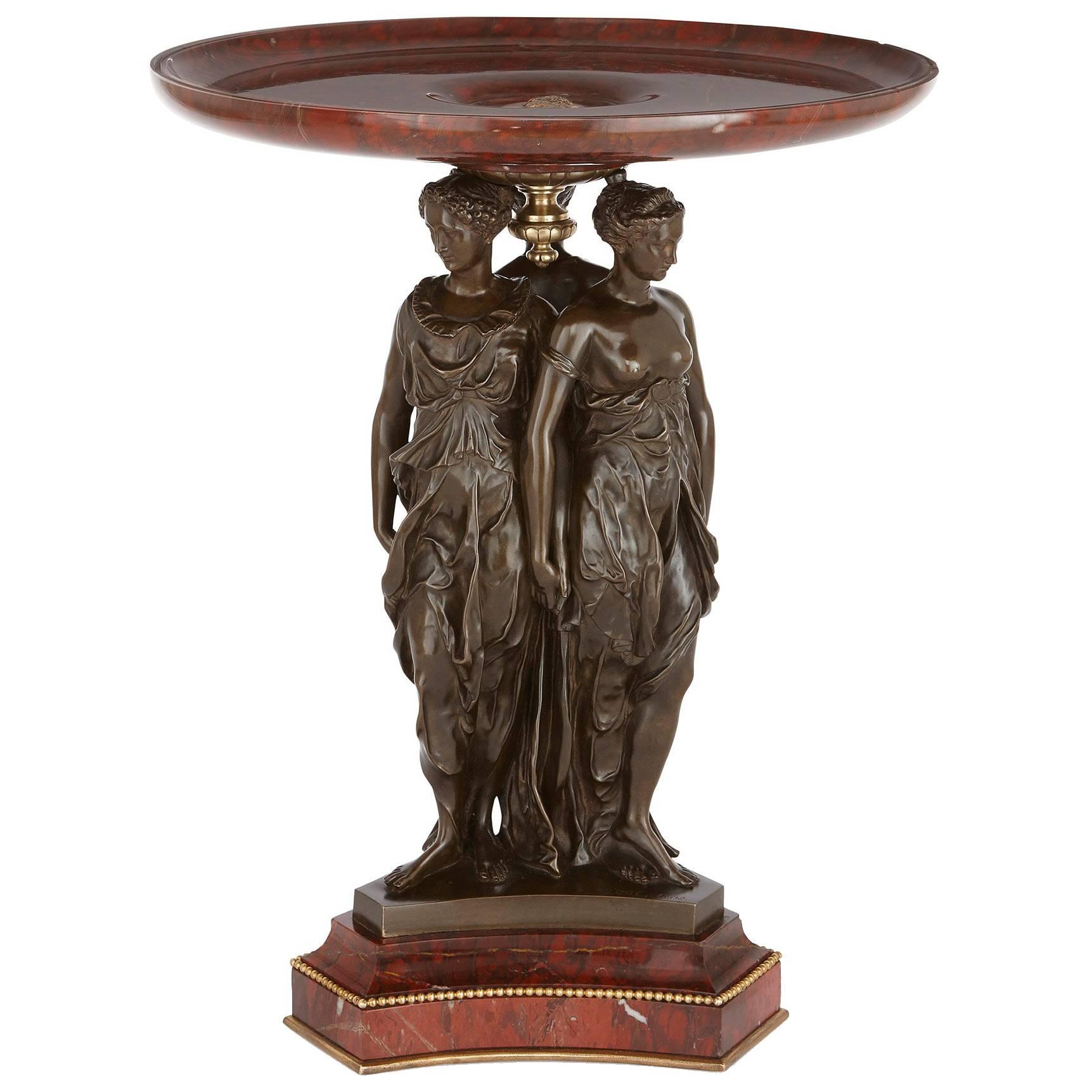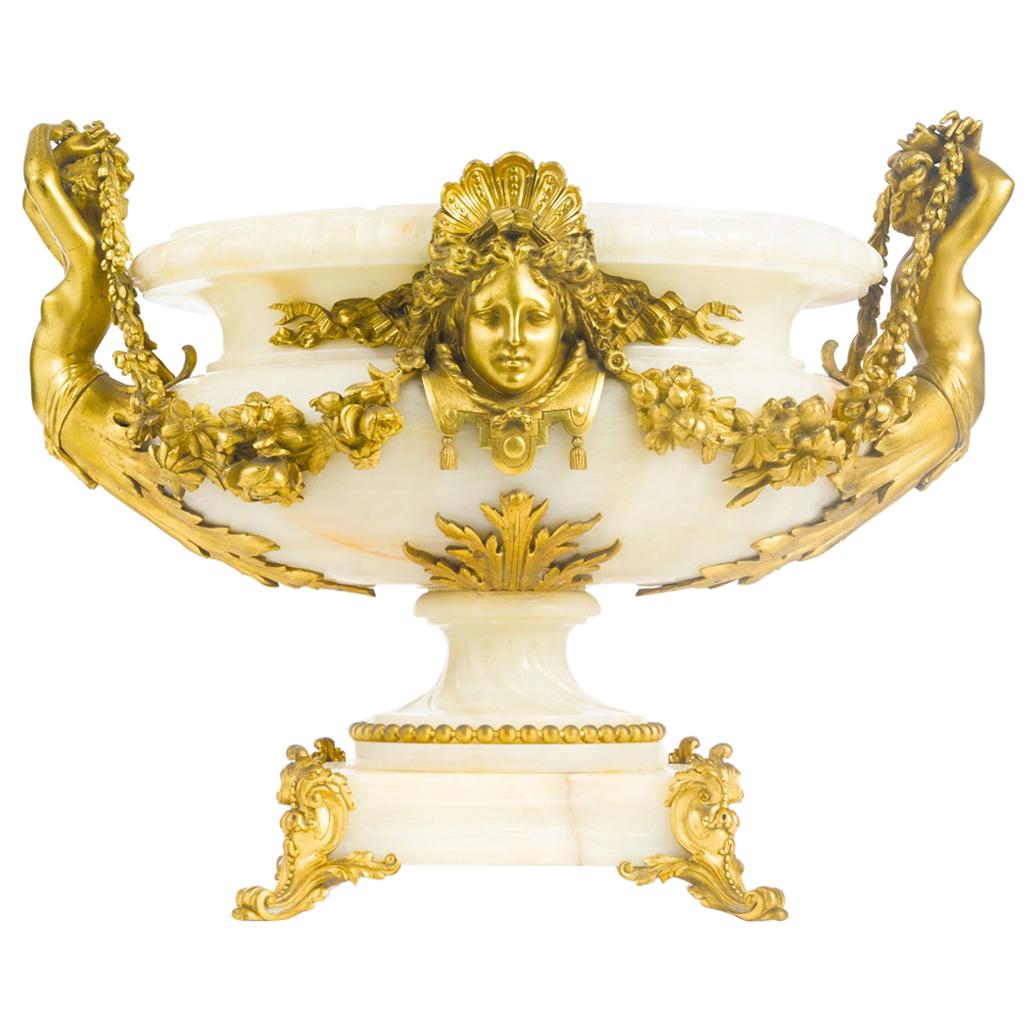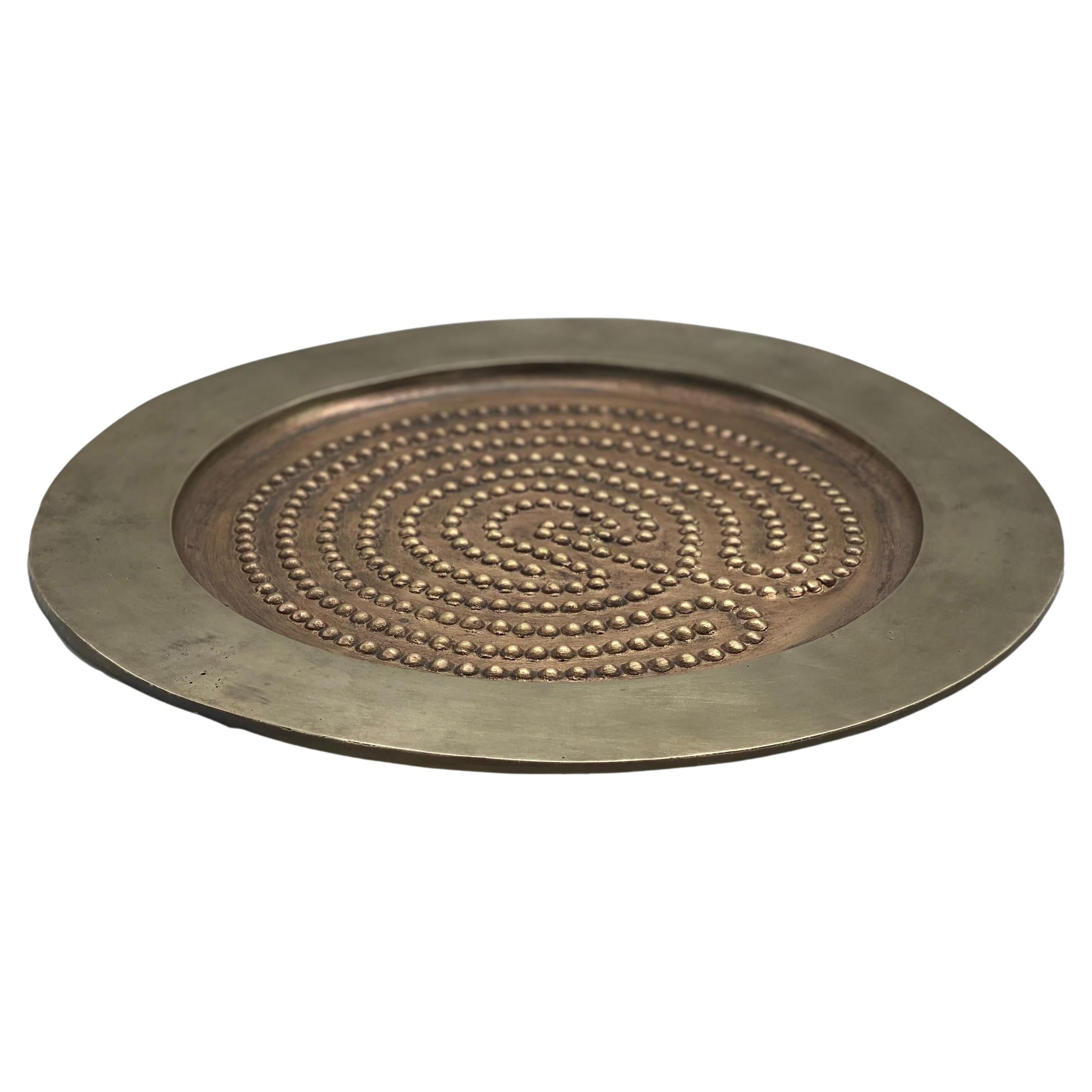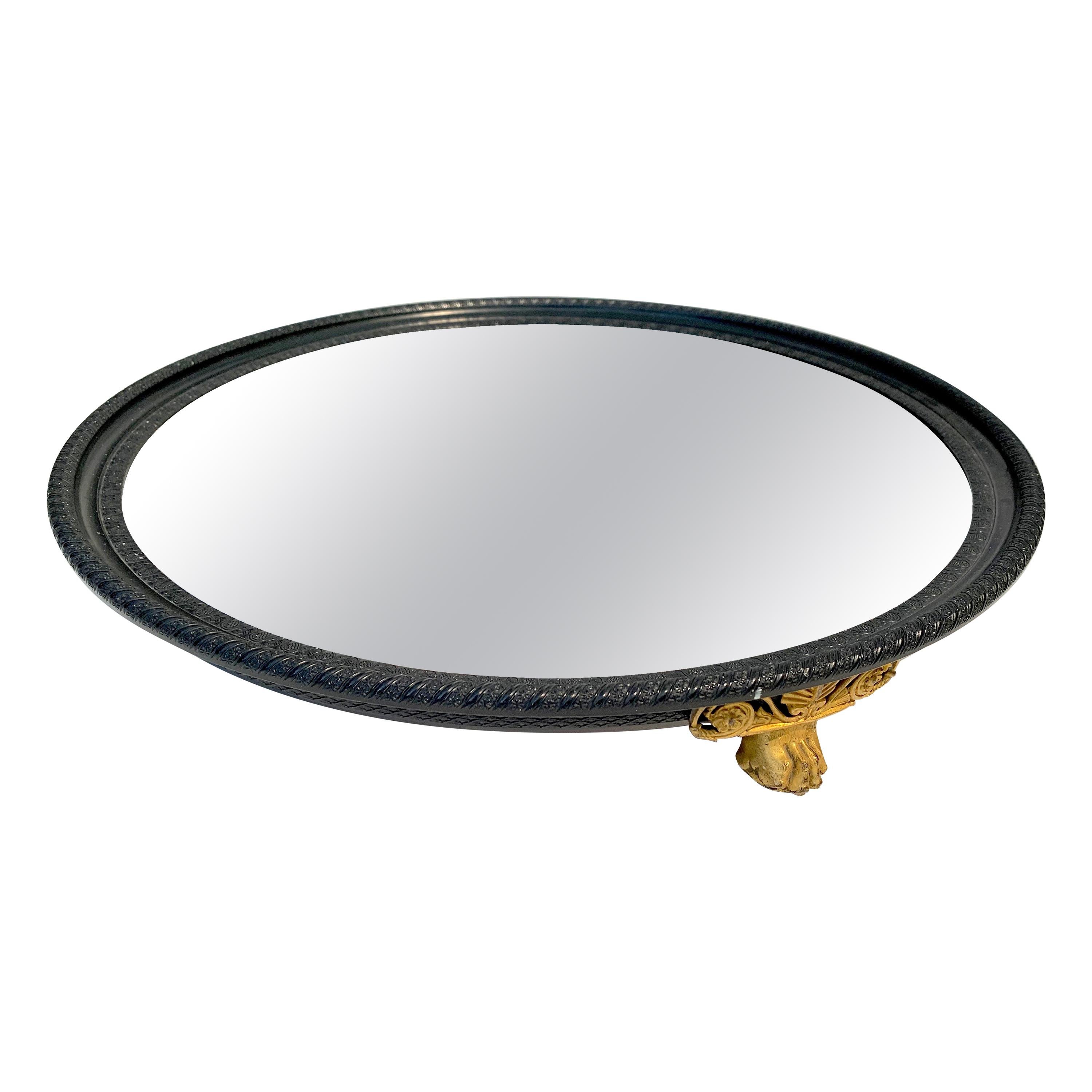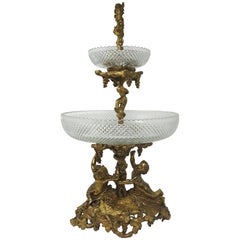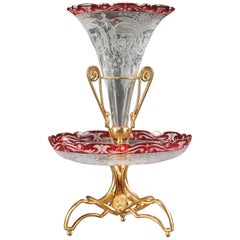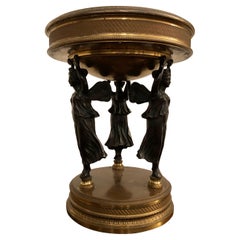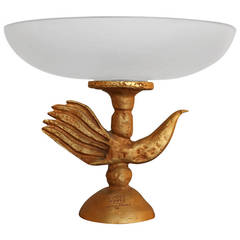
Gilt Bronze and Frosted Cristal Centrepiece by Pierre Casenove
View Similar Items
1 of 7
Gilt Bronze and Frosted Cristal Centrepiece by Pierre Casenove
About the Item
- Creator:Pierre Casenove (Designer)
- Dimensions:Height: 11.4 in (28.96 cm)Width: 9 in (22.86 cm)Depth: 14.2 in (36.07 cm)
- Place of Origin:
- Period:
- Date of Manufacture:1994
- Condition:
- Seller Location:Amsterdam, NL
- Reference Number:1stDibs: LU105601269404
You May Also LikeView All
- 19th Century Gilt Bronze CentrepieceBy Napoléon IIILocated in London, GBA gilt bronze centrepiece, with two crisply cut bowls on fruiting vine centre supported by two putti on oval base.Category
Antique Late 19th Century French Napoleon III Centerpieces
MaterialsBronze
- Late 19th Century Crystal and Gilt Bronze CentrepieceLocated in Paris, FRRed and transparent crystal centerpiece composed of a flared vase and cup. They are engraved with leafy rinceau, grape vines, and scrolling foliage. Gilt bronze mounts are decorated ...Category
Antique Late 19th Century French Napoleon III Centerpieces
MaterialsCrystal, Bronze
- French 19th Century Neoclassical Bronze and Gilt CentrepieceLocated in Toronto, CAA wonderful French Neoclassical bronze and gilt centrepiece from the nineteenth century. With three bronze caryatid fairy figures holding gilt brass mounts, likely for larger centrep...Category
Antique 19th Century French Empire Centerpieces
MaterialsBronze
- Empire Style Gilt Bronze and Mirror Surtout de Table CentrepieceLocated in London, GBEmpire style gilt bronze and mirror surtout de table centrepiece French, 20th Century Height 13.5cm, width 318cm, depth 66.5cm This French-crafted tab...Category
20th Century French Neoclassical Centerpieces
MaterialsOrmolu
- A Large Louis Philippe Period Gilt-Bronze Table CentrepieceBy Guillaume DenièreLocated in Brighton, West SussexA Large Louis Philippe Period Gilt-Bronze Table Centrepiece or Corbeille (Fruit Basket). Attributed to Guillaume Denière (1815-1903), Paris, Circa 1840. The four sculptural figures of seated children are attributed to Jean-Jacques Feuchère (1807-1852) and represent the four elements of Fire, Water, Earth, and Air. Each figure is accompanied by its corresponding attribute. Fire holds a flaming torch and sits atop a dragon. Water sits atop a dolphin and perhaps originally held a trident spear. Earth holds grapes and ears of wheat accompanied by a lioness and cub. Air holds a billowing robe and sits atop an exotic bird. The circular top of the centrepiece with beaded rim and cast in relief to the basin with strapwork and lion masks. The underside of the basin similarly cast with additional detail of herm figures above a belt of intertwined vine leaf and mice. The whole supported on a baluster upright hung with volutes and fruiting swags above a spreading socle and oval foot. This impressive centrepiece dates to the late 1830s or early 1840s when the patronage of King Louis Philippe I of France heralded a pronounced flourishing in the sculptural art of metallurgy. Such a specific dating can be made with reference to a surtout de table which was commissioned in 1834 by Ferdinand-Philippe, duc d’Orléans and eldest son of King Louis Philippe. That famous and documented surtout de table, comprised centerpieces, candelabra and tazze modelled in a new sculptural style with figures, animals and naturalistic decoration. Designed in the Renaissance revival style by Claude-Aimé Chenavard (1798–1838) and Jean-Baptiste-Jules Klagmann (1810–1867) and made by Chenavard’s pupil Guillaume Denière, the duc d’Orléans surtout was a ‘Gesamtkunstwerk’ with input from many designers, modellers and sculptors including from Jean-Jacques Feuchère (1807-1852), Pierre-Jules Cavelier (1814- 1894) and Antoine-Louis Barye (1795–1875). The surtout was delivered to Ferdinand-Philippe’s apartments at the Tuileries Palace in April 1839. Ferdinand Philippe, duc d’Orléans died in a carriage accident three years later, on 13 July 1842 and following the French Revolution of 1848 the extensive surtout was sold by his widow, the former Duchesse Hélène of Mecklenburg-Schwerin (1814-1858) at Hôtel Drouot, Paris, 18-20 January 1853. It was divided into multiple lots with the sculptural centrepieces by Antoine-Louis Barye, candelabra and decorative dishes widely dispersed. The present centrepiece compares closely to multiple elements of the duc d’Orléans surtout de table, most obviously in the profusion of Renaissance revival strapwork and the figures of children which in appearance, pose and allegorical purpose are directly comparable to related figures of children variously employed as attributes for music, feasting and hunting across the centrepieces and candelabra which make up the Orléans surtout de table. Compare a pair of candelabra titled ‘candelabra with woman playing flute...Category
Antique 19th Century French Louis Philippe Centerpieces
MaterialsOrmolu
- Neoclassical Sterling Silver Gilt Centrepiece by GorhamBy Gorham Manufacturing CompanyLocated in New York, NYNeoclassical, sterling silver gilt centrepiece, Gorham Manufacturing Co., Providence, Rhode Island, circa 1865. Dish is oval in form and has pendant handles that move. Stem is flanke...Category
Antique 1860s American Neoclassical Sterling Silver
MaterialsSterling Silver, Gold
Recently Viewed
View AllMore Ways To Browse
Silver Centrepiece French
Gilt Bronze Crystal Centerpiece
Crystal And Gilt Bronze Centerpiece
French Cristal Bronze
Heart Silver Bowl
Gilt Bronze Crystal Bowl
Casenove Pierre
Large Italian Centerpiece
Italian Silver Fruit
Vintage Travel Posters England
Antique Gold Centerpiece
Italian Table Centerpiece
Silver Centrepieces
Italian White Centerpiece
Large Modern Glass Centerpiece
Large Bowl And Centerpieces
Large Centerpiece Bowl
Vintage Poster Brazil
